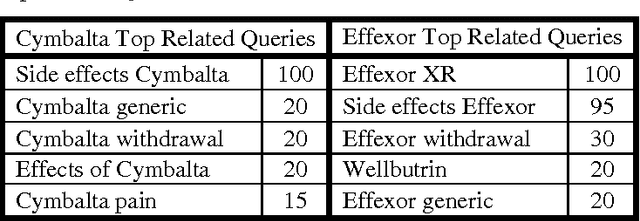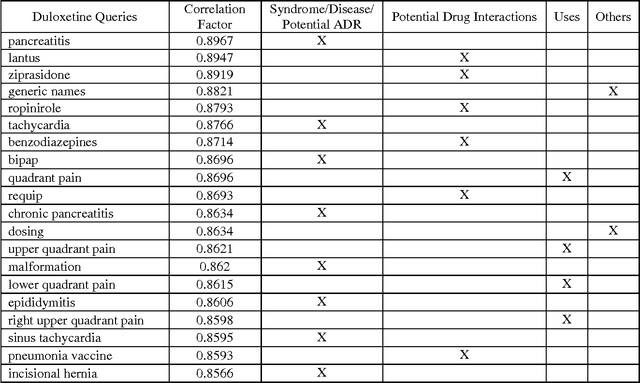Abbas Chokor
Mining the Web for Pharmacovigilance: the Case Study of Duloxetine and Venlafaxine
Oct 08, 2016



Abstract:Adverse reactions caused by drugs following their release into the market are among the leading causes of death in many countries. The rapid growth of electronically available health related information, and the ability to process large volumes of them automatically, using natural language processing (NLP) and machine learning algorithms, have opened new opportunities for pharmacovigilance. Survey found that more than 70% of US Internet users consult the Internet when they require medical information. In recent years, research in this area has addressed for Adverse Drug Reaction (ADR) pharmacovigilance using social media, mainly Twitter and medical forums and websites. This paper will show the information which can be collected from a variety of Internet data sources and search engines, mainly Google Trends and Google Correlate. While considering the case study of two popular Major depressive Disorder (MDD) drugs, Duloxetine and Venlafaxine, we will provide a comparative analysis for their reactions using publicly-available alternative data sources.
 Add to Chrome
Add to Chrome Add to Firefox
Add to Firefox Add to Edge
Add to Edge